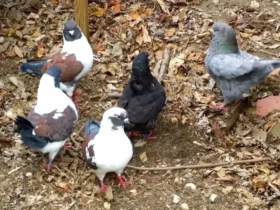In the serene woodlands of North America, a small but charismatic avian resident captures the essence of forest life—the Hairy Woodpecker (Picoides villosus). With its distinctive drumming sounds, intricate plumage, and important ecological role, this woodpecker species is a beloved sight among birdwatchers, nature enthusiasts, and those who find solace in the great outdoors. In this article, we delve into the captivating world of the Hairy Woodpecker, exploring its appearance, behaviors, habitat, and its role in maintaining the balance of woodland ecosystems.
Hairy Woodpecker images
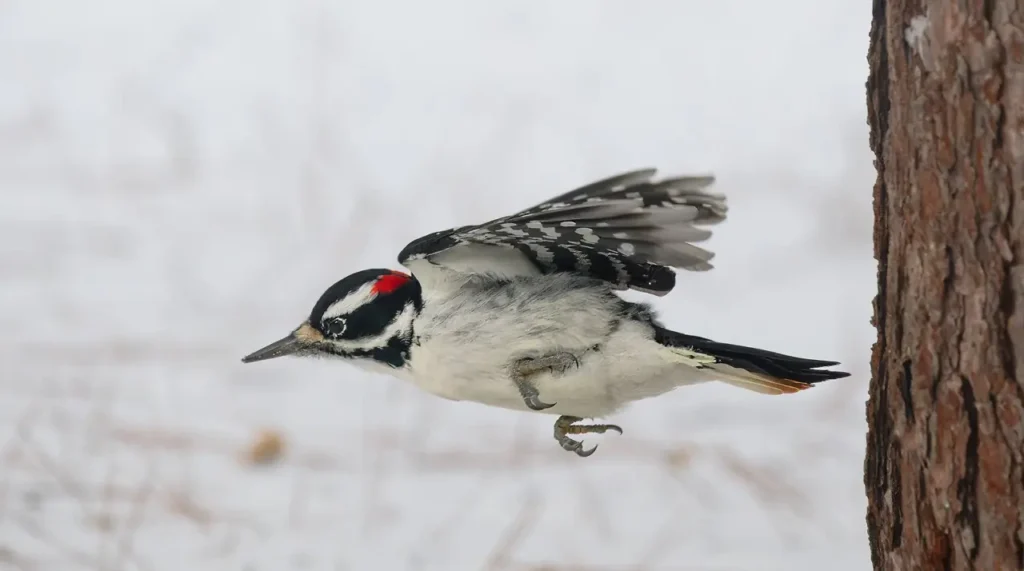
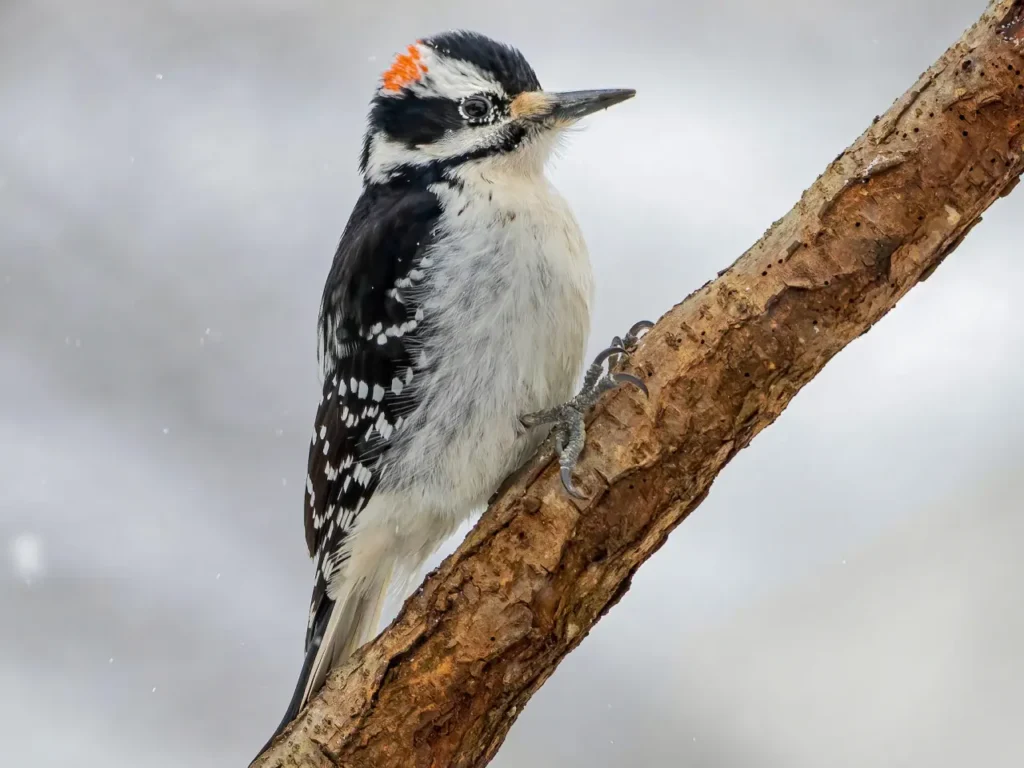
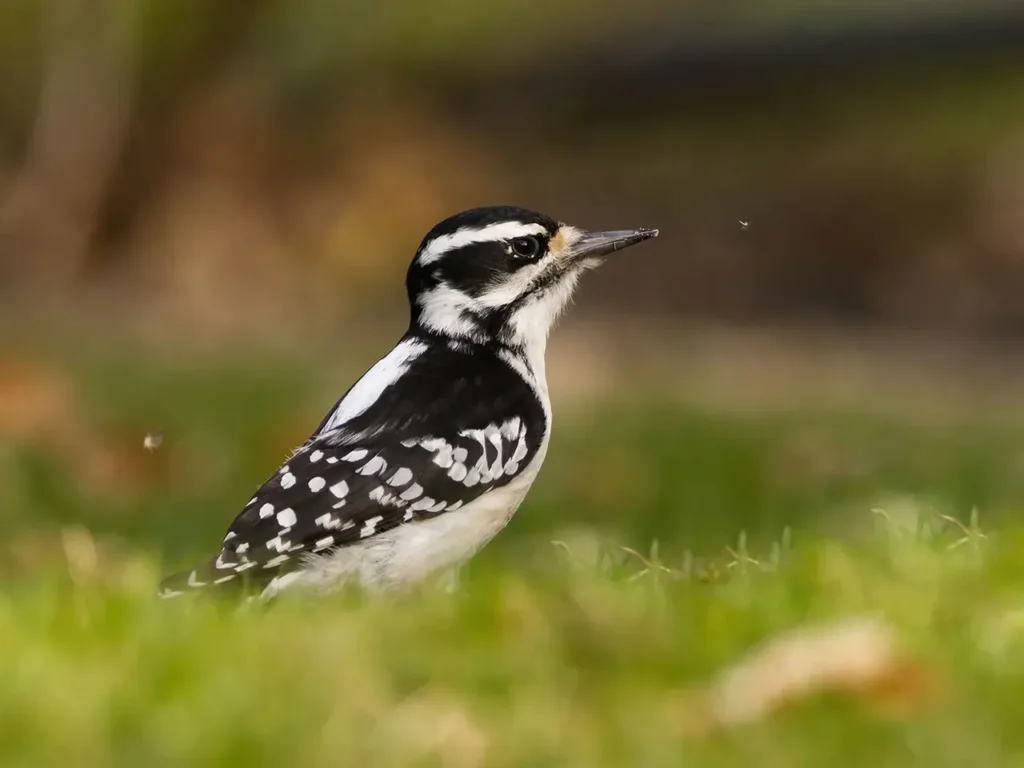
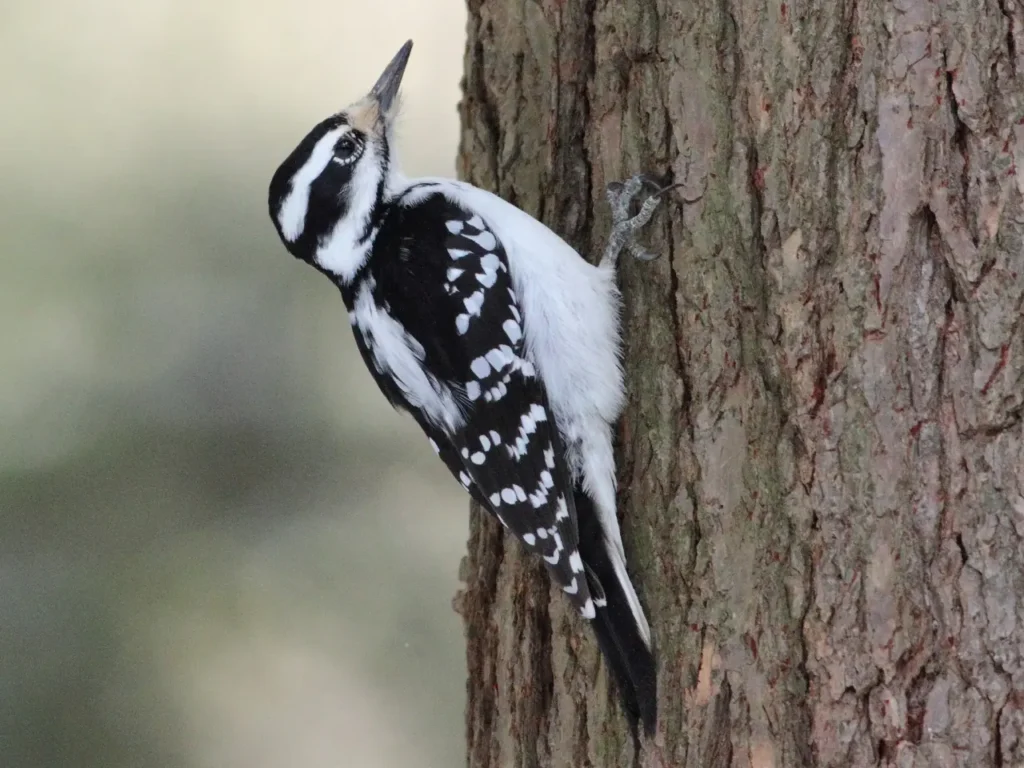
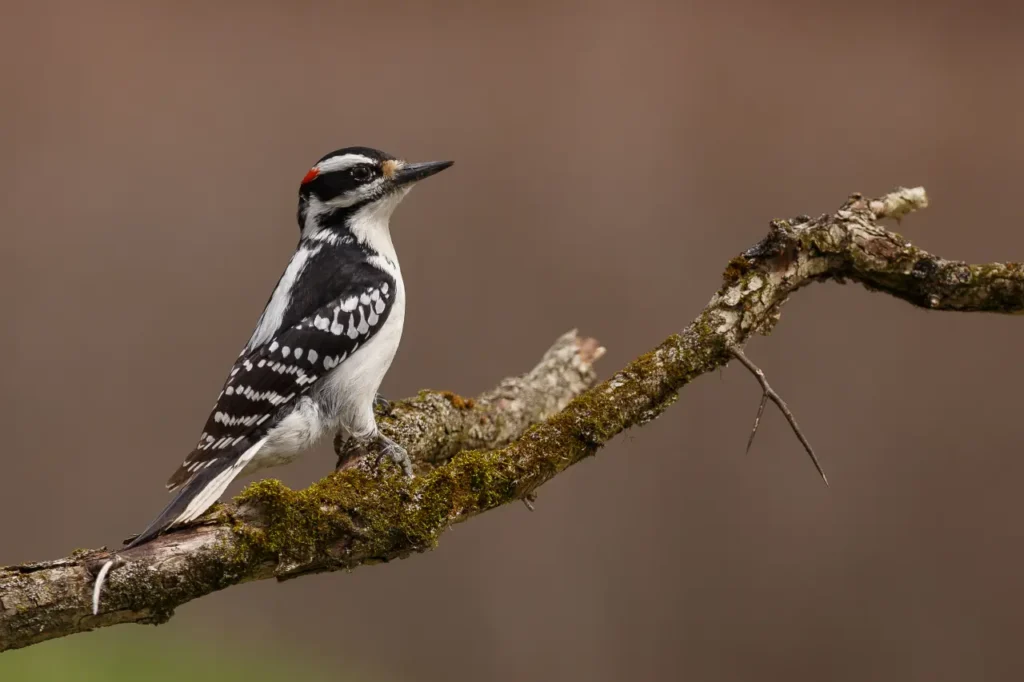
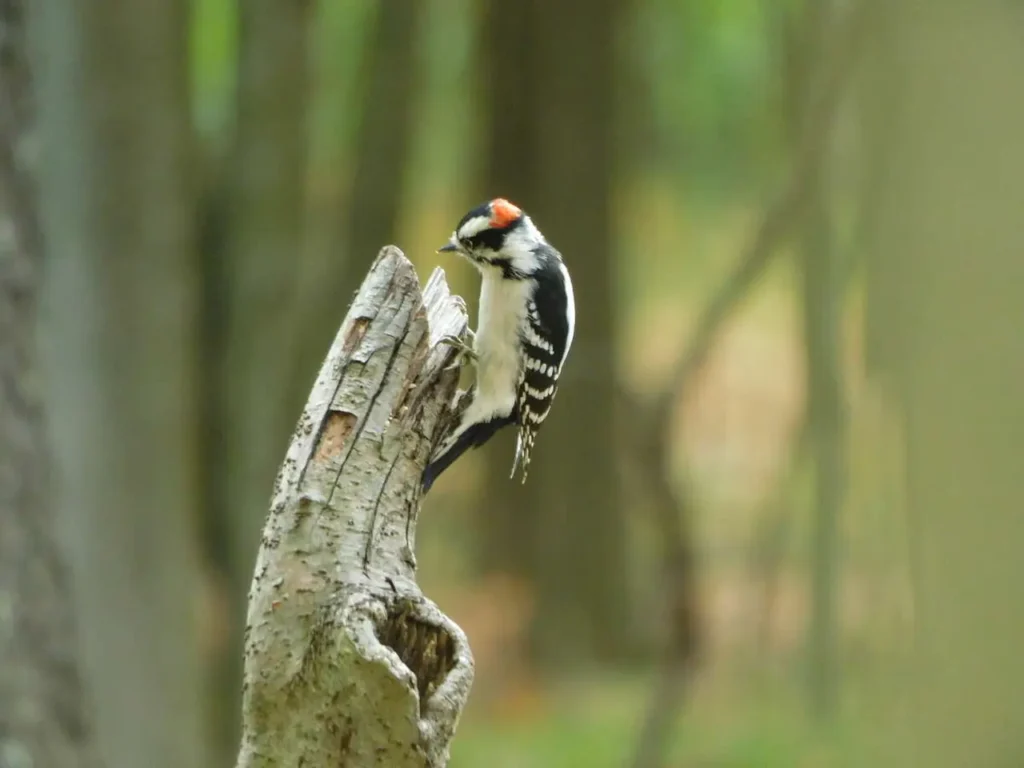
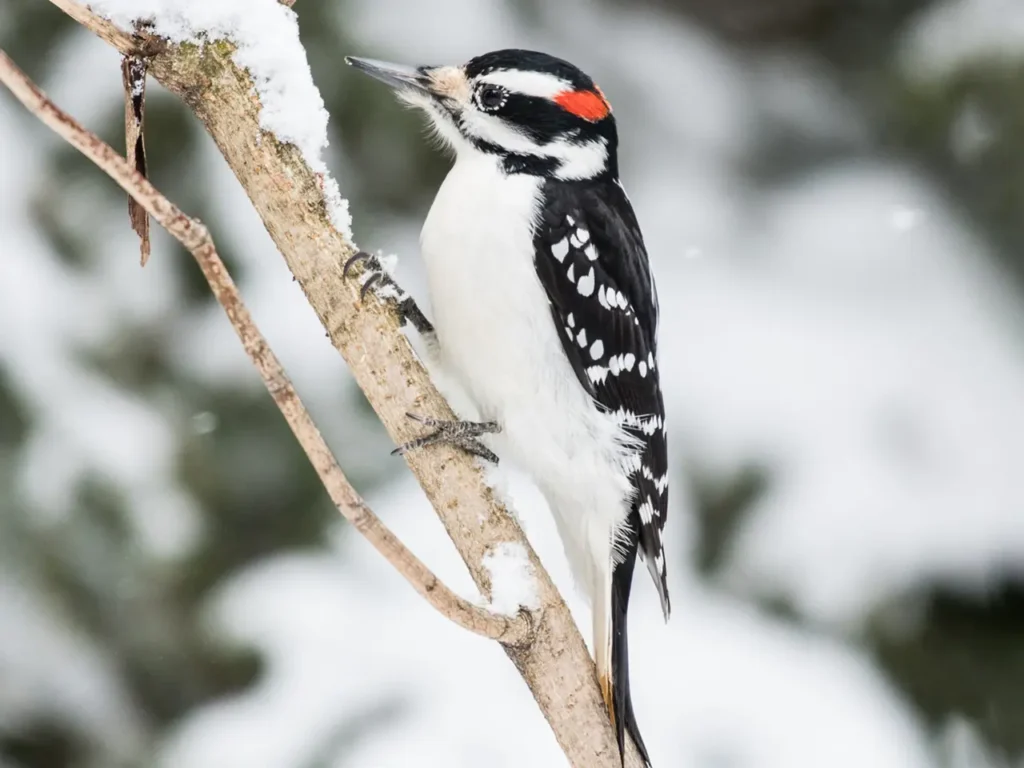
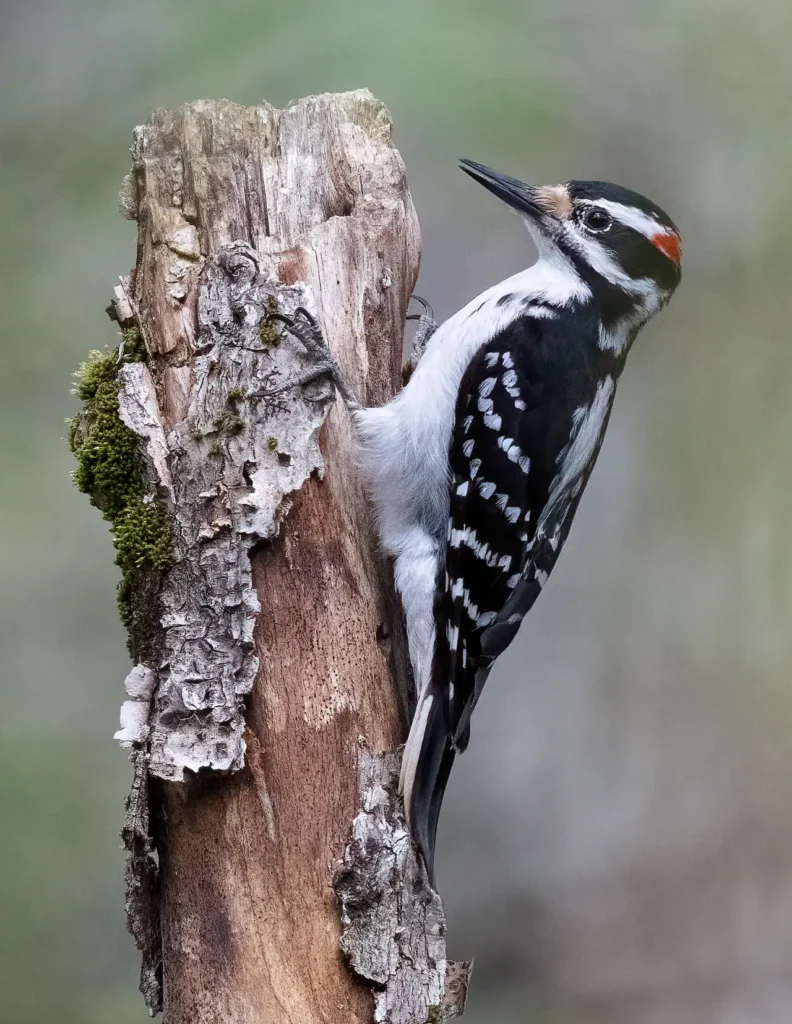
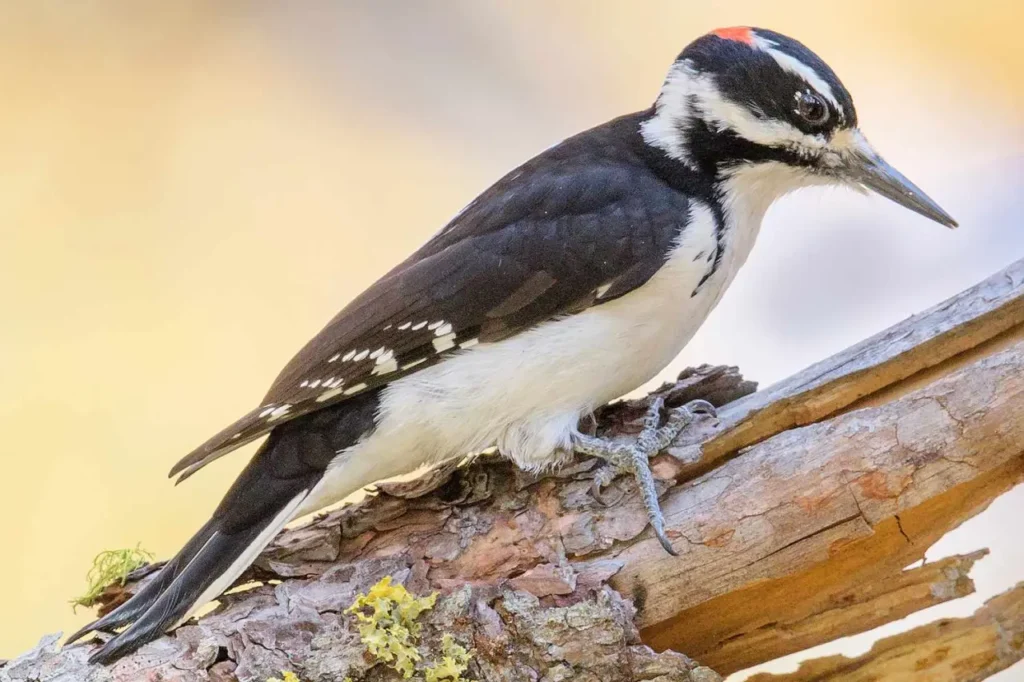
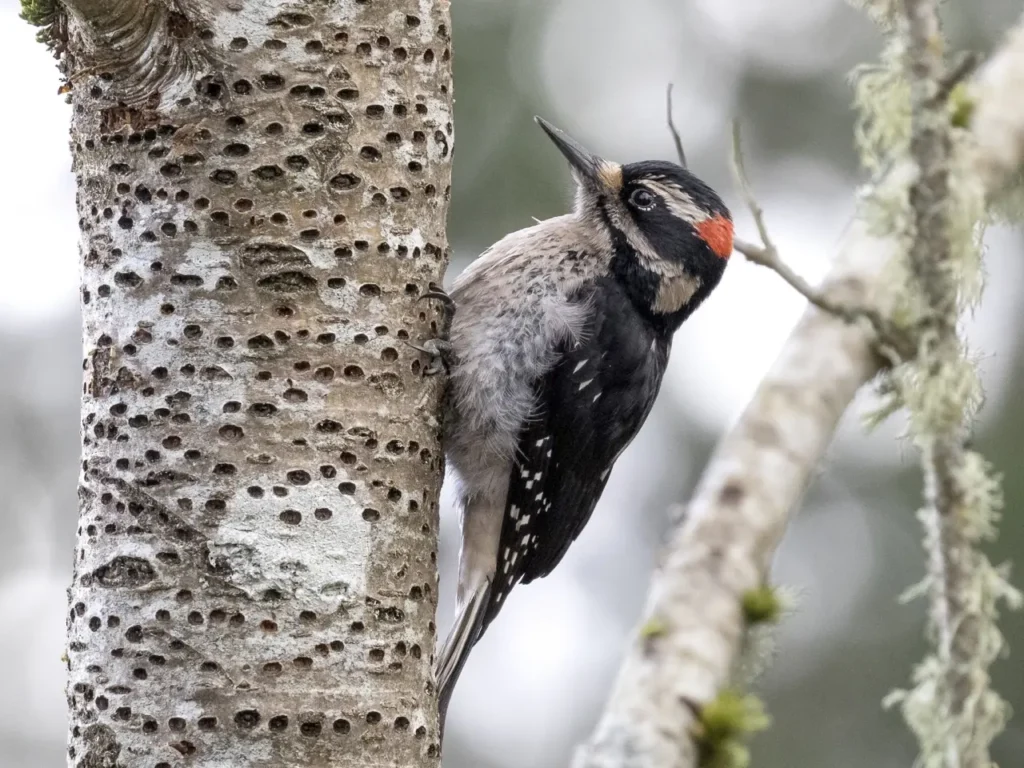
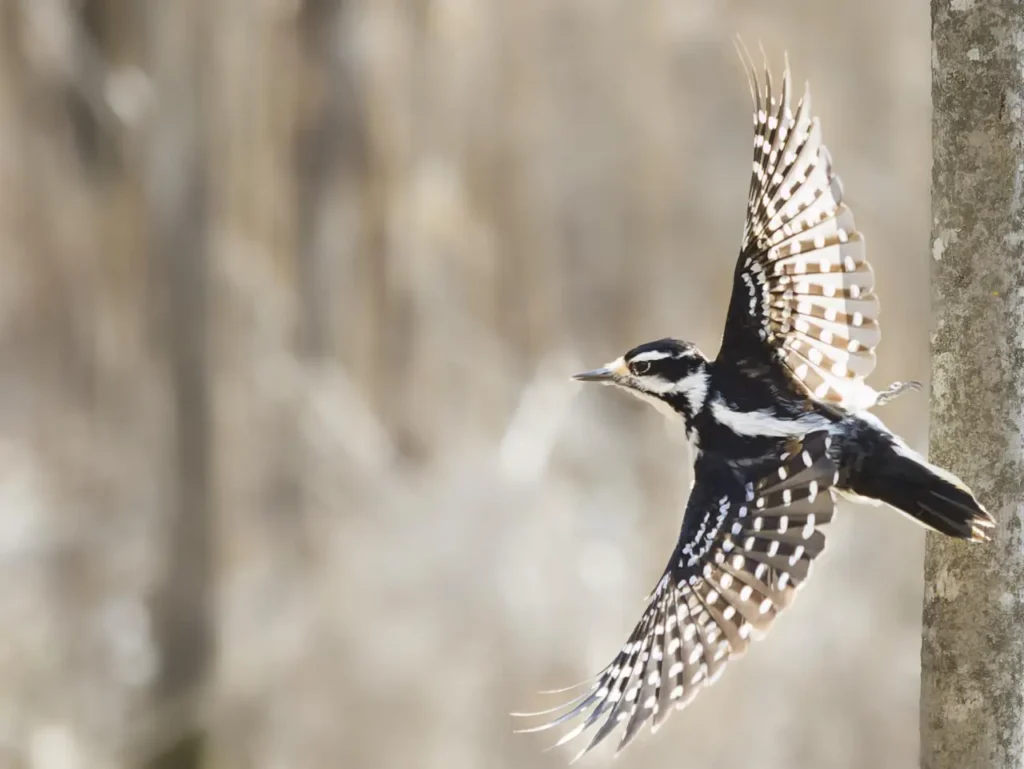
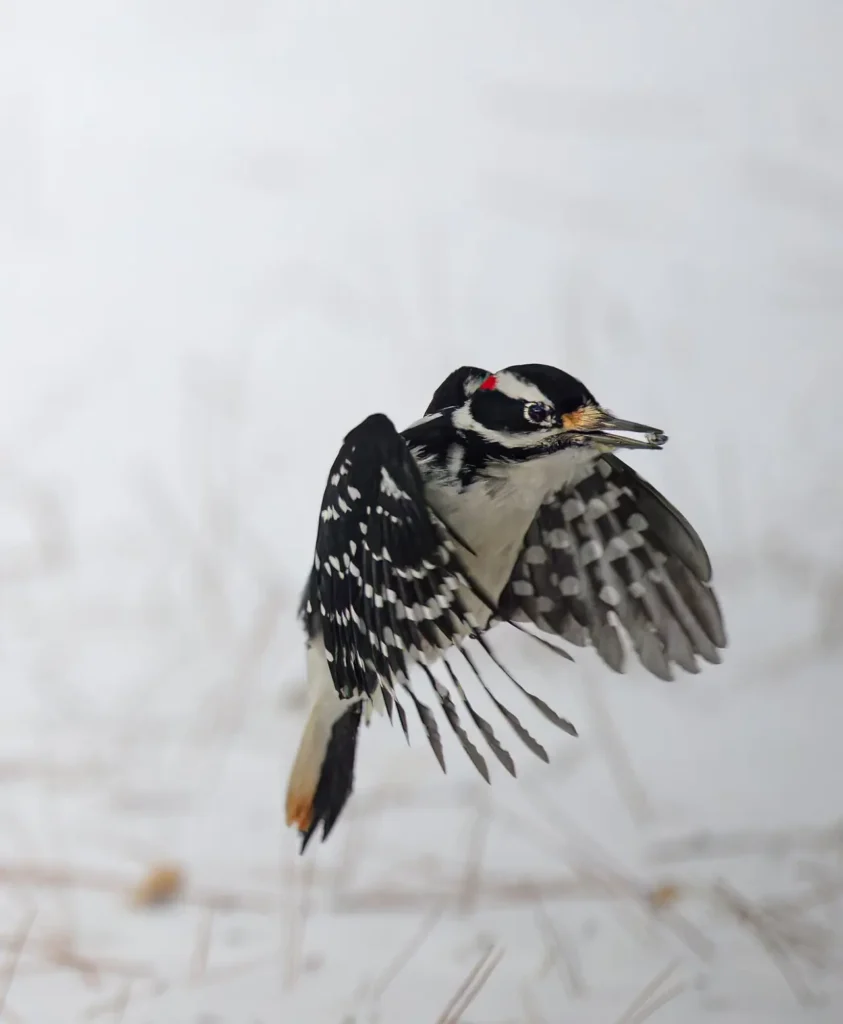
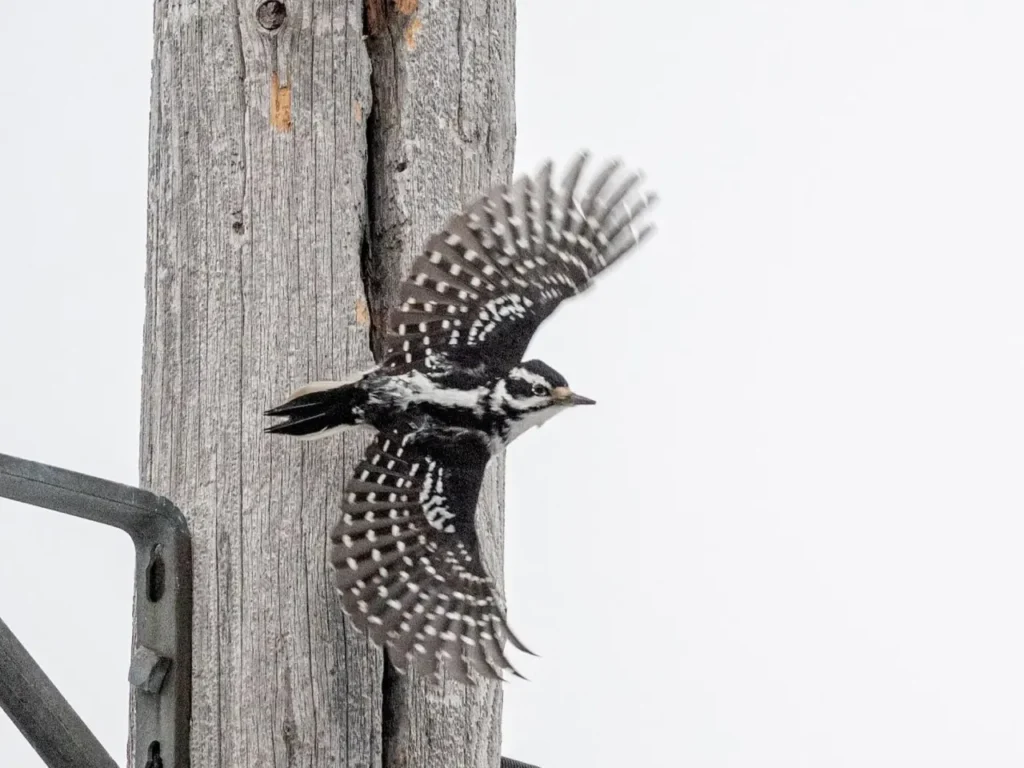
Appearance and Identification
The Hairy Woodpecker, though small in size, possesses an impressive blend of features that distinguish it in the avian realm. Sporting a black and white coloration, these woodpeckers exhibit a crisp and classic appearance. Their outer feathers are predominantly black, while their undersides, including the belly and tail, are pristine white. The defining feature of the Hairy Woodpecker is its iconic white patches on its wings, which are a prominent field mark used by birdwatchers to identify the species.
The “Hairy” Misnomer
The Hairy Woodpecker’s name can be a source of confusion due to the perception that it’s somehow “hairy.” In reality, the name refers to the hair-like appearance of the fine, stiff feathers on its head. These feathers create a textured and slightly raised appearance, which might resemble hair at a glance.
Drumming and Communication
One of the most distinctive behaviors of the Hairy Woodpecker is its drumming. Woodpeckers, including the Hairy Woodpecker, use drumming as a form of communication and territory establishment. By rhythmically pecking on trees, dead wood, or other surfaces, they create a sound that can be heard across the forest. This behavior serves to attract mates, signal their presence, and establish their territory to other woodpeckers.
Feeding Habits and Role in Ecosystems
Hairy Woodpeckers are primarily insectivorous, using their strong beaks to forage for insects, larvae, and spiders beneath the bark of trees. They also have a taste for seeds, nuts, and berries, making them opportunistic omnivores. This diet plays a crucial role in regulating insect populations, contributing to the health and balance of woodland ecosystems.
Habitat and Range
Hairy Woodpeckers are versatile birds that inhabit a range of woodland environments, including deciduous and mixed forests, as well as suburban areas with mature trees. They can be found throughout North America, from Canada to parts of Central America. Their adaptability to various habitats and their ability to coexist with human settlements make them a common sight for bird enthusiasts.
Conservation and Encounters
The Hairy Woodpecker’s population remains stable, and they are not considered a threatened species. Encountering these woodpeckers in their natural habitats provides an opportunity to observe their foraging techniques, drumming behavior, and the intricate interplay between woodpeckers and the ecosystems they inhabit.
The Hairy Woodpecker, with its distinctive appearance, rhythmic drumming, and invaluable ecological contributions, stands as a testament to the intricate connections that exist within woodland environments. As they tap into the rhythms of nature, these woodpeckers remind us of the delicate balance that sustains the beauty and diversity of the natural world. Observing and appreciating the Hairy Woodpecker’s presence is an invitation to deepen our understanding of the ecosystems around us and to cherish the harmonies that echo through the forests.
